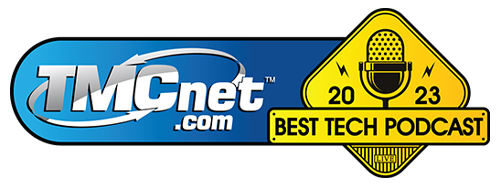EP 13: Top 5 Microsoft 365 Collaboration Tool Hacks
Posted on July 10, 2023 by Fusion Connect
Join George Schoenstein and Santi Cuellar on Tech UNMUTED as they discuss tips to maximize collaboration using Microsoft 365. Discover the power of a camera-on culture to forge connections in remote work settings. Learn the art of effective file naming for seamless organization and searchability. Harness the potential of Microsoft Teams' Planner tool to supercharge project management. Say goodbye to email attachments and embrace real-time document collaboration. And, unleash the potential of chat platforms for streamlined communication.
Watch & Listen
Tech UNMUTED is on YouTube
Catch up with new episodes or hear from our archive. Explore and subscribe!
Transcript for this Episode:
INTRODUCTION VOICEOVER: This is Tech UNMUTED. The podcast of modern collaboration – where we tell the stories of how collaboration tools enable businesses to be more efficient and connected. With your hosts, George Schoenstein and Santi Cuellar. Welcome to Tech UNMUTED.
GEORGE: Welcome to the latest episode of Tech UNMUTED. Today we're going to take a look at the top five Microsoft 365 collaboration hacks.
SANTI: I like hacks.
GEORGE: Yes, for sure. These are things we thought through that will make it easier for you to collaborate, obviously but also, it's going to increase your productivity both individually and as a team. We're going to do a countdown from five to one. We've got a little bonus one at the end that we're going to talk about it a little bit as well. Number five is Lights Camera Action. Santi, you want to hit on that one a little bit?
SANTI: Absolutely. In this world we live in now where we have hybrid and remote and all sorts of work styles you should strive to have your camera on. Cameras on in a meeting are critical. They're critical because you want to be to connect with your colleagues-- well, you're not in office anymore, and you want to be able to build those relationships and build that culture. I understand that not everybody likes cameras, but I think cameras on are a way to go.
GEORGE: You think about where we're at today. If what if this were 25 years ago, and COVID happens? We would all be back in the office. This hybrid model wouldn't have existed with conference calls. Clearly with collaborative documents, everything we talked about that has changed today with 365 which literally would not have been able to do it 20,25 years ago, even really 10 years ago. You'll hear it in a couple of the other things we'll hit on today.
SANTI: Listen, I know not everybody likes cameras. People are camera shy but that's why we also have avatars. I think the purpose of the video and the avatar is that there is a representation of you in the meeting. Yes, I'm all for it.
GEORGE: Let's get to number four. What's in a name? I'll hit on this one first and you can chime in Santi. When you're sharing documents, you're creating documents, it's really critical to actually name them something that one, if you're sending it that the person knows what it is intuitively if it's sitting in the list of documents and two, that it's got some date or timestamp.
SANTI: Correct.
GEORGE: We don't have a standard, we should probably talk about it as a team and get to a standard, but my standard approach is a year. Like 2023, month, June, some descriptive thing of what's in that file. If it's critical to a specific point in time, I'll put the actual date. Month, day, year, then at the end of it so that there's some anchor, but it makes it a lot easier to go back and search and find it or search share documents or whatever else Santi, you want to.
SANTI: Actually, I had a question. That format that you use which I know you use that date format at the front of the naming convention for your file, does that help you find your file?
GEORGE: Absolutely. A lot of times I'll know the anchor. Hey, I did something last year, it was 2023, or sorry, it was 2022 or it was 2022 and maybe it was April or May. I'll search April, May. Sometimes I'll filter down by I know it was PowerPoint. That still could be a lot of documents but it does make it a lot easier to drill down and then find it. The useful part of it as well is in the sharing piece where it's somewhere else with another person because a lot of times I know I've pinned you in documents with you a year ago, and I can't find it. A lot of times you'll come back and go, "Yes, I know where it is." I had it pinned or something.
SANTI: I don't have a standard format. I believe a lot in creating a structured folder system based on the topic at hand or the project at hand. I tend to just find a folder and not so much to file, but I think having a standard naming convention that's universal across a team, yes, I can see the value in that. I think that's something that we could get better at for sure.
GEORGE: Yes, we've got to definitely spend a little time on that. Number three and this has a collection of things underneath it, but use planner not paper. Planner is maybe we'll do an episode just on this in the future. Not a lot of people use Planner, right? It's a feature within a team, within Microsoft Teams that's project management. It's got cards where you can store elements of the project, data related to that, attach files, that kind of stuff, and obviously assign resources otherwise in the project. There's a lot of other elements that are beyond Planner. You want to hit on some of those, Santi?
SANTI: Yes, listen. I know for a fact that there's still folks like I need to create a calendar. What do they do, they go open up a PowerPoint, and they grab the template that comes from Microsoft, it gives you a calendar. I'm like, that doesn't make any sense these days. You have calendars in SharePoint, for example. You have calendars now in this new Microsoft Loop environment. We can actually have that shareable calendars that can be edited live.
GEORGE: That was the bonus feature Santi mentioned. Microsoft Loop. We're going to record that episode tomorrow.
SANTI: Yes, that's going to be the next episode. I'm excited about it because I absolutely love Loop. You have these technologies at your fingertips now. There's no need to go back to, honestly, it's to some degree archaic ways. We're past that. Yes, don't use paper, don't print stuff out. Don't use PowerPoint which is really meant to present not to create a calendar. Use the right tools and become that much more effective. I'm all for that.
GEORGE: We're going to go to number two, we debated whether it's number two or number one. This is one of my pet peeves, but sharing is caring.
SANTI: Oh, yes.
GEORGE: This is share doc, don't attach a file and send it around, and then you have version two and version three--
SANTI: Oh, my Gosh.
GEORGE: It's share it as editable. That's the key. Some systems are set up 365 so that by default, the shared document is editable. Others like our environment are not. Make sure if it's not, that you do it as editable. Oftentimes people get concerned, "Hey, I have this document, I used to use version names, I don't use it, what if I delete something and I need that thing that I've deleted?" You just go into your OneDrive folder, and you look for versions.
SANTI: That's right.
GEORGE: You go back and you restore a version and it doesn't restore that version for everybody.
SANTI: Correct.
GEORGE: It just gives you the ability to open one of the previous versions, pull out what you need, drop it back into the deck into the Word doc, whatever it is. You've got a history then of what happened in the doc that you would've never had before because you never saved the versions correctly right or anything. That's huge.
SANTI: I will tell you something, not only should you share, and not attach, but when somebody shares something with you, please do not take that file and save it as something else. There's no need for that. Also, I'm going to save it as my version. No, just make your changes into a link that was shared with you and call it a day because all you've created now is you've broken the chain. Now you've created a completely separate document that has changes that nobody understands what you did, and somebody has to try and merge those into the live document. That doesn't make any sense. That's the whole purpose of co-authoring with Microsoft 365.
GEORGE: Now to number one. Number one is that email could have been a chat. There's multiple derivations of this, but think about when you're sending emails out. What often happens is, starts out ---
SANTI: ---and I send an email to each other and then somebody else gets added to the email, and somebody else and somebody else and somebody else, and then you're saying to people, "Hey, look down four emails to see what that latest topic was and the points I made."
People are scrolling down through the headers on every email and the footers to get to it. If you did this in a chat, everything's in the chat, you can add somebody and give them the full history and the documents that are attached to the chat are available to them. There's no headers or footers so they can scroll back through much more easily, and see where it started and where it ended up. We had one internally that happened about a year ago, we pulled a bunch of people in, and some people who had been actively using 365 and others who hadn't. We ended up with 20 people in that chat for a fairly time-sensitive project that we were working on with a lot of senior folks in the company. It was the first time, I think that everybody really leaned in and saw the power. Everybody who's working in shared docs which hadn't really happened before, there was a single document that we eventually needed to get to. Everybody was working, reviewing the same document, and all of the conversations was in Chat and Teams.
SANTI: I go back to my Vegas trip, to the Microsoft 365 conference, where they asked me and they stumped me, "How many still create calendar invites in Outlook instead of Teams?" Of course, we all raised our hands. You see, what we're witnessing is a transformational shift in how we conduct business, and everything we've mentioned here today is really about two things. First of all, changing the way you think about how you conduct business, and you have to realize that, the way you did things five years ago isn't how we do it today, so there has to be a shift in that sense.
Then two, there has to be a cultural shift in where we start to embrace these technologies at the corporate level, it's corporate culture, so that we can leverage these tools and be more effective. I know you wanted to say the nugget, which was Loop, listen, Loop is an amazing platform, it's a brand new. It's in preview mode, it's in public preview mode right now, we are going to do a little deeper dive in the next podcast on Loop. Loop is one of those platforms that I think is going to force that change, both at the corporate level, and both at the individual mindset level, because you have to you, you have no choice but to think differently when you're working on Loop. Loop is basically, for those who haven't heard about Microsoft Loop, it is Microsoft’s new online collaboration platform.
It is where you can go and plan, and collaborate, and approve, and track, things within your team, and we'll get into that in the next podcast. These are the technologies and the changes that are happening, they're happening really fast, and what we've shared with you today is really just, honestly, it's best practices, best practices, or hacks on how to leverage their tools. Listen, you said it best, George, you have to be a pioneer, you can't fight the machine, you have to be a pioneer, right?
GEORGE: Yes, and it's a combination of, you mentioned it, that corporate culture that team goes through. Are we going to do the new things and try to get more productive or are we going to sit around and wait for it to happen? If you sit around and wait for it to happen, you won't get the productivity increase, somebody else will, or some other team or whatever.
SANTI: That's right.
GEORGE: It goes down to video as well. Some organizations explicitly say, you don't have to be on video, and our culture internally here is, everybody, should be on video, right?
SANTI: Correct.
GEORGE: Our team uses 95% of the time everybody is on video, sometimes, we had a call earlier today, a couple of folks are on avatars, it's perfectly fine.
SANTI: Perfectly fine.
GEORGE: It makes the interaction feel more like you're actually in the office. Again, next podcast we're going to talk about Loop, there's a lot of elements to it and we'll work through a demo environment where you can see some things that we've done and the way you can interact, but it's really cool. We will start to break that down, on the next one, and we may go a little deeper, even beyond that because we feel like this is going to supplant a number of things that are going on with Teams today.
SANTI: Absolutely, or a number of processes anyway. Folks, here we are, we're at the end of our podcast, we want to thank you all for joining today. Those are your five productivity hacks, I hope you've jotted them down on a piece of paper. No, don't do that, don't do that, but thank you for joining. If you want the show notes, you can find those at fusionconnect.com/TechUNMUTED. You'll have more details on what we spoke on here in this podcast today, and please, please, don't forget to subscribe, on your favorite podcast platform, so that you don't miss an episode. Until next time.
CLOSING VOICEOVER: Visit www.fusionconnect.com/techunmuted for show notes and more episodes. Thanks for listening.
Produced by: Fusion Connect
Listen on Your Favorite Podcast Player:


Expert insights, exclusive content, and the latest updates on Microsoft products and services - direct to your inbox. Subscribe to Tech ROUNDUP!
Tech UNMUTED, the podcast of modern collaboration, where we tell the stories of how collaboration tools enable businesses to be more efficient and connected. Humans have collaborated since the beginning of time – we’re wired to work together to solve complex problems, brainstorm novel solutions and build a connected community. On Tech UNMUTED, we’ll cover the latest industry trends and dive into real-world examples of how technology is inspiring businesses and communities to be more efficient and connected. Tune in to learn how today's table-stakes technologies are fostering a collaborative culture, serving as the anchor for exceptional customer service.
Tech UNMUTED is a production of Fusion Connect, LLC.

 Amazon Music
Amazon Music Podcast Index
Podcast Index TuneIn
TuneIn Listen Notes
Listen Notes